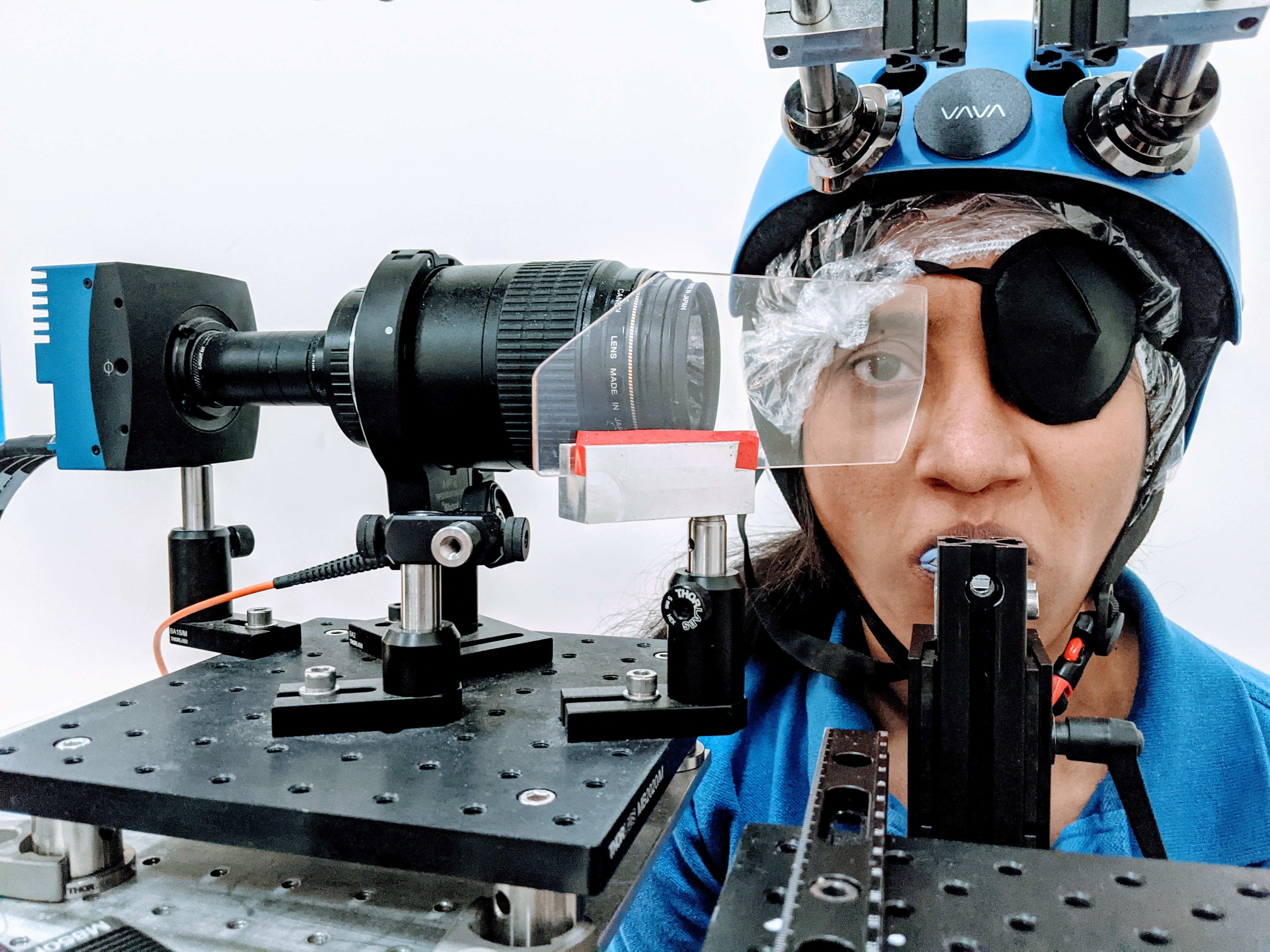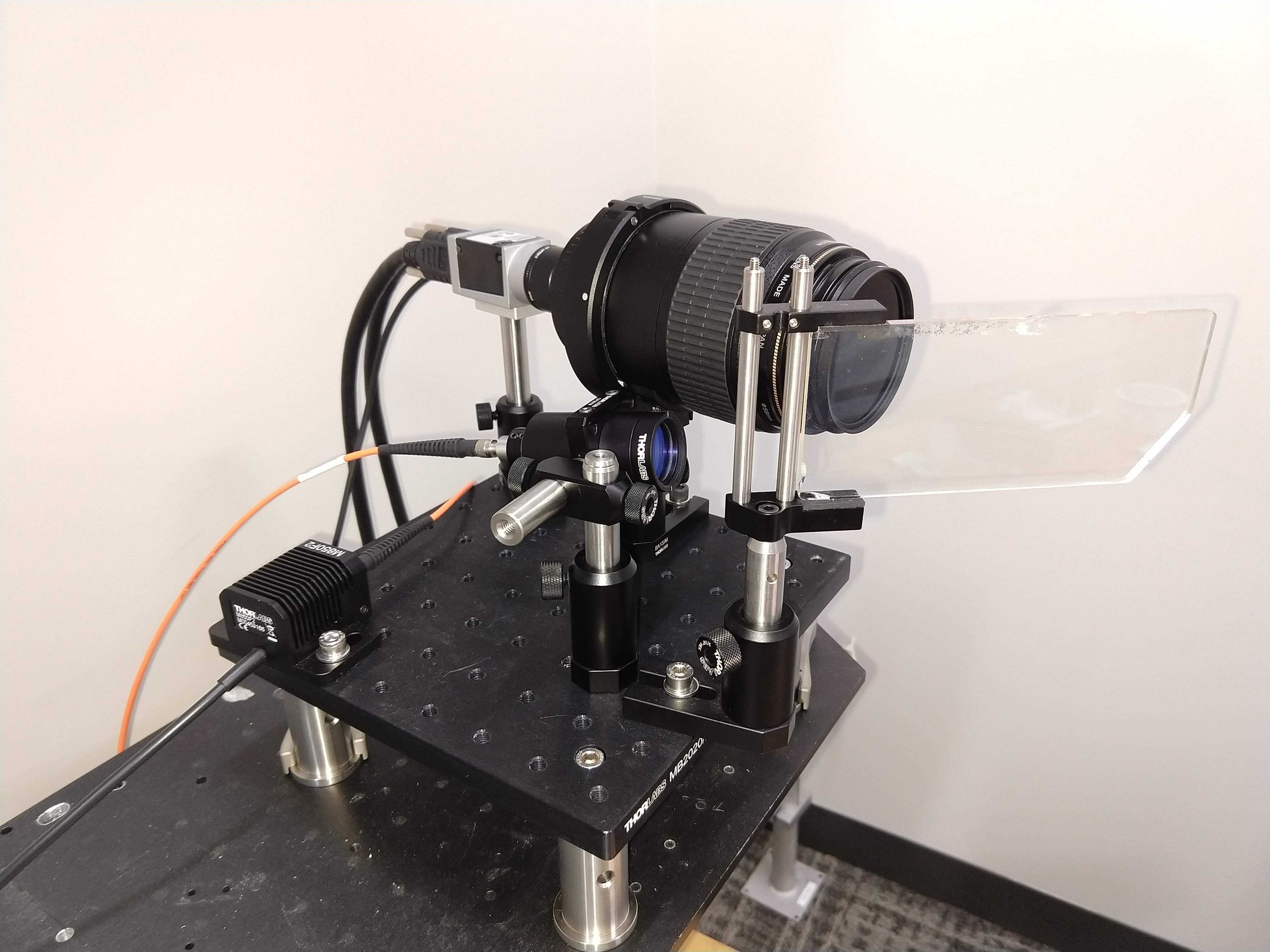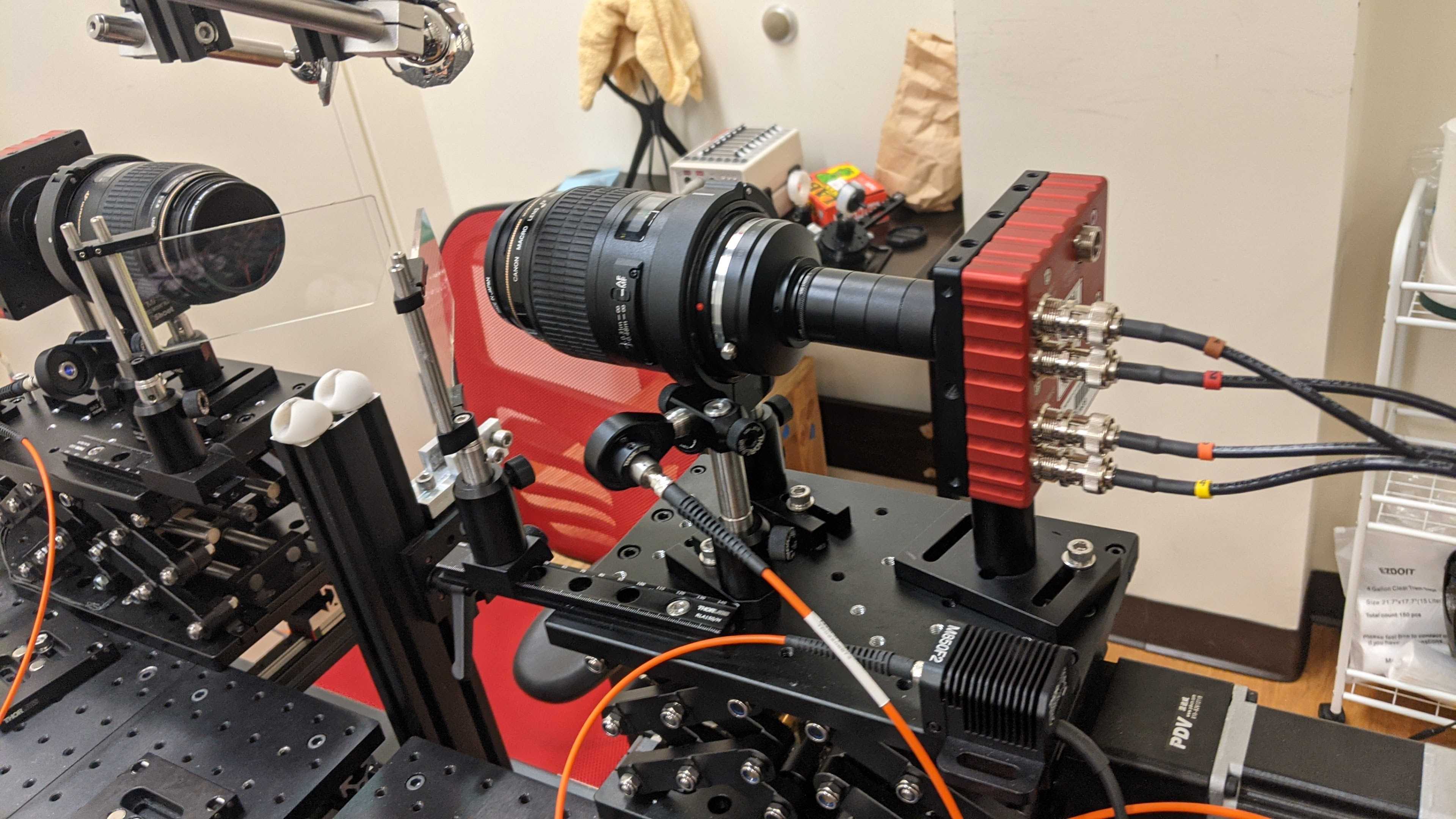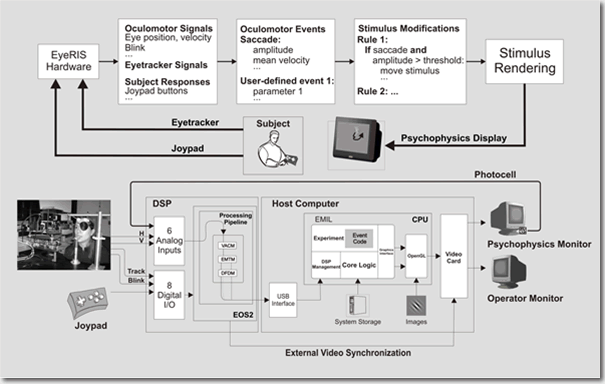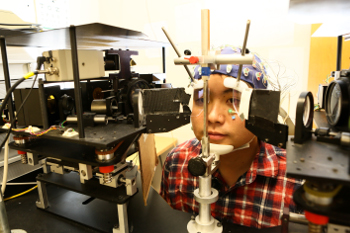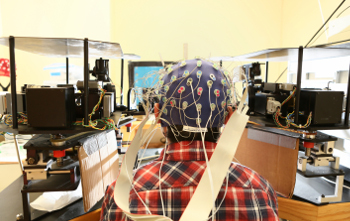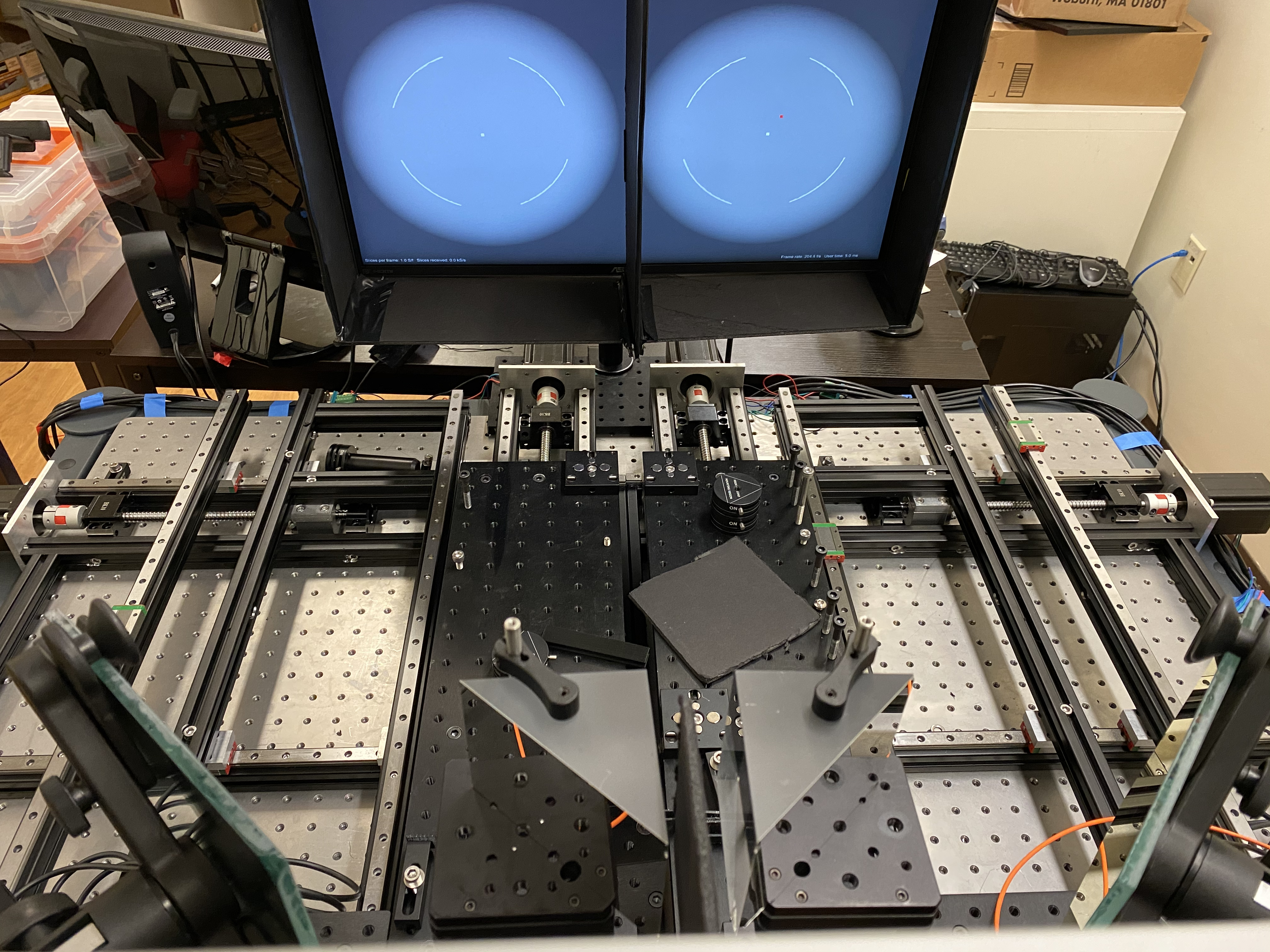Facilities
Located within the Center for Visual Science at the University of Rochester, the Active Perception Laboratory features extensive facilities to investigate the synergy between visual, motor, and cognitive processes. To overcome limitations of traditional approaches, a constant effort of researchers in the Active Perception Laboratory has been the development of new experimental tools and devices. As a consequence, the Active Perception Laboratory features a unique array of advanced systems for precisely tracking behavior and controlling retinal stimulation.
Gaze Tracking
Digital Dual-Purkinje Image Eye-Tracker
We have developed a new generation of eye-trackers with extremely high spatial and temporal resolution and sensitivity (US Patent 11003244B2). These systems enable reliable measurements of the subtlest eye movements.
Body & Object Tracking
Eye Coil System
A custom-built revolving field monitor enables precise recording of head and eye movements without restricting the head. Its ability to detect small-scale changes in magnetic field voltages allow the measurement of head-eye movements and coordinations in 3D space.
Optitrack
An integrated camera system that has the ability to track hand and object motion in synchrony with the coil system. This system also serves as a calibration aid for the eye coil system.
PhaseSpace
A motion capture system for high resolution head tracking.
Gaze-Contingent Display
EyeRIS
EyeRIS (Eye movement Real-time Integrated System), a custom hardware-software system for gaze-contingent display control. This system allows flexible real-time modification of the stimulus according to subjects' eye movements with refresh rates up to 1000Hz. The original EyeRIS has led to numerous discoveries about the contributions of eye movements to visual perception. We are currently developing a new version for increased speed, flexibility, and compatibility with digital eye tracking systems.
Virtual Reality
Oculus VR
The Oculus VR is used for experiments involving a 3D virtual environment.
HTC Vive
The SMI/HTC Vive VR system is designed for eye tracking in a head-free environment.
Anatomical & Retinal Imaging
Adaptive Optics Scanning Laser Opthalmoscope (AOSLO)
Images individual cones on the retina by bypassing aberrations of the eye, using advanced wavefront sensing technology. This system can compensate for eye movements by projecting stimuli to individual cones, thus achieving state-of-the-art retinal image stabilization.
Shared Resources
As apart of the CVS department, the AP Lab also access to the following: Optical Coherence Tomography (OCT), Intra Ocular Lens (IOL) Master, Autorefractor, Tonopen, Fundus Camera
Electroencephalography
An ActiveTwo EEG with 64 active electrodes (Biosemi) with a Polhemus 3D digitizer for source localization. The EEG system is interfaced with EyeRIS, our system for gaze contingent display control. We are able to track eye movements and brain activities synchronously during visual tasks.
Displays
Stereoscope
To study stereoscopic perception, two monitors present distinct stimuli to each eye simultaneously through two separate mirrors. This allows us to achieve retinal stabilization of one eye at a time as well as binocular stabilization.
BioRobotics
Mr. T
Mr. T is a humanoid platform built as part of our ongoing effort of coupling computational models of the brain with behaving automata. The head and eye system of this robot was designed to replicate the visual input signals to the retina.
General Resources
The lab also has an extensive supply of tools that help in the development of other our other equipment. This includes an OEMI-7 artificial eye from Ocular Instruments, a 3D printer, a CNC machine, a galvanometer, and oscilloscope.
